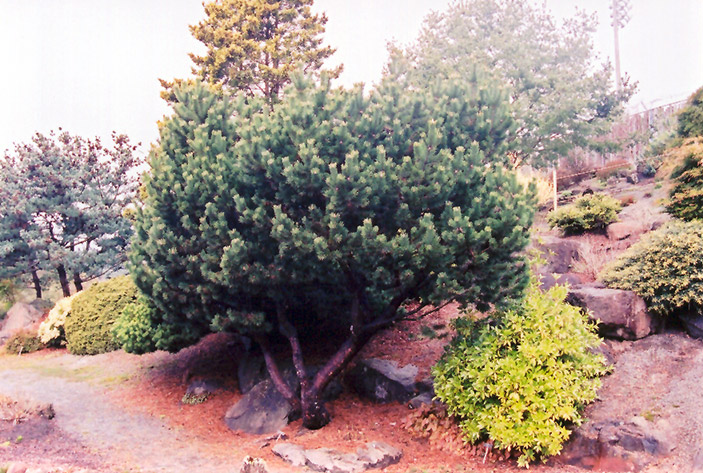Dwarf Japanese Red Pine
Pinus densiflora 'Pygmaea'
Height: 8 feet
Spread: 8 feet
Sunlight:
![]()
Hardiness Zone: 4b
Description:
A beautiful compact, rounded and somewhat irregular pine with long green needles; dense yet open enough to display reddish brown bark on its branches; top choice for the distinguished garden composition
Ornamental Features
Dwarf Japanese Red Pine is a dwarf conifer which is primarily valued in the landscape or garden for its ornamental globe-shaped form. It has attractive aqua bluish-green-tipped green foliage. The needles are highly ornamental and remain green throughout the winter.
Landscape Attributes
Dwarf Japanese Red Pine is a dense multi-stemmed evergreen shrub with a more or less rounded form. Its relatively fine texture sets it apart from other landscape plants with less refined foliage.
This is a relatively low maintenance shrub. When pruning is necessary, it is recommended to only trim back the new growth of the current season, other than to remove any dieback. It has no significant negative characteristics.
Dwarf Japanese Red Pine is recommended for the following landscape applications;
- Accent
- Mass Planting
- Hedges/Screening
- General Garden Use
Planting & Growing
Dwarf Japanese Red Pine will grow to be about 8 feet tall at maturity, with a spread of 8 feet. It tends to fill out right to the ground and therefore doesn't necessarily require facer plants in front, and is suitable for planting under power lines. It grows at a medium rate, and under ideal conditions can be expected to live for 60 years or more.
This shrub should only be grown in full sunlight. It prefers dry to average moisture levels with very well-drained soil, and will often die in standing water. It is considered to be drought-tolerant, and thus makes an ideal choice for xeriscaping or the moisture-conserving landscape. It is not particular as to soil type, but has a definite preference for acidic soils. It is highly tolerant of urban pollution and will even thrive in inner city environments. This is a selected variety of a species not originally from North America.







